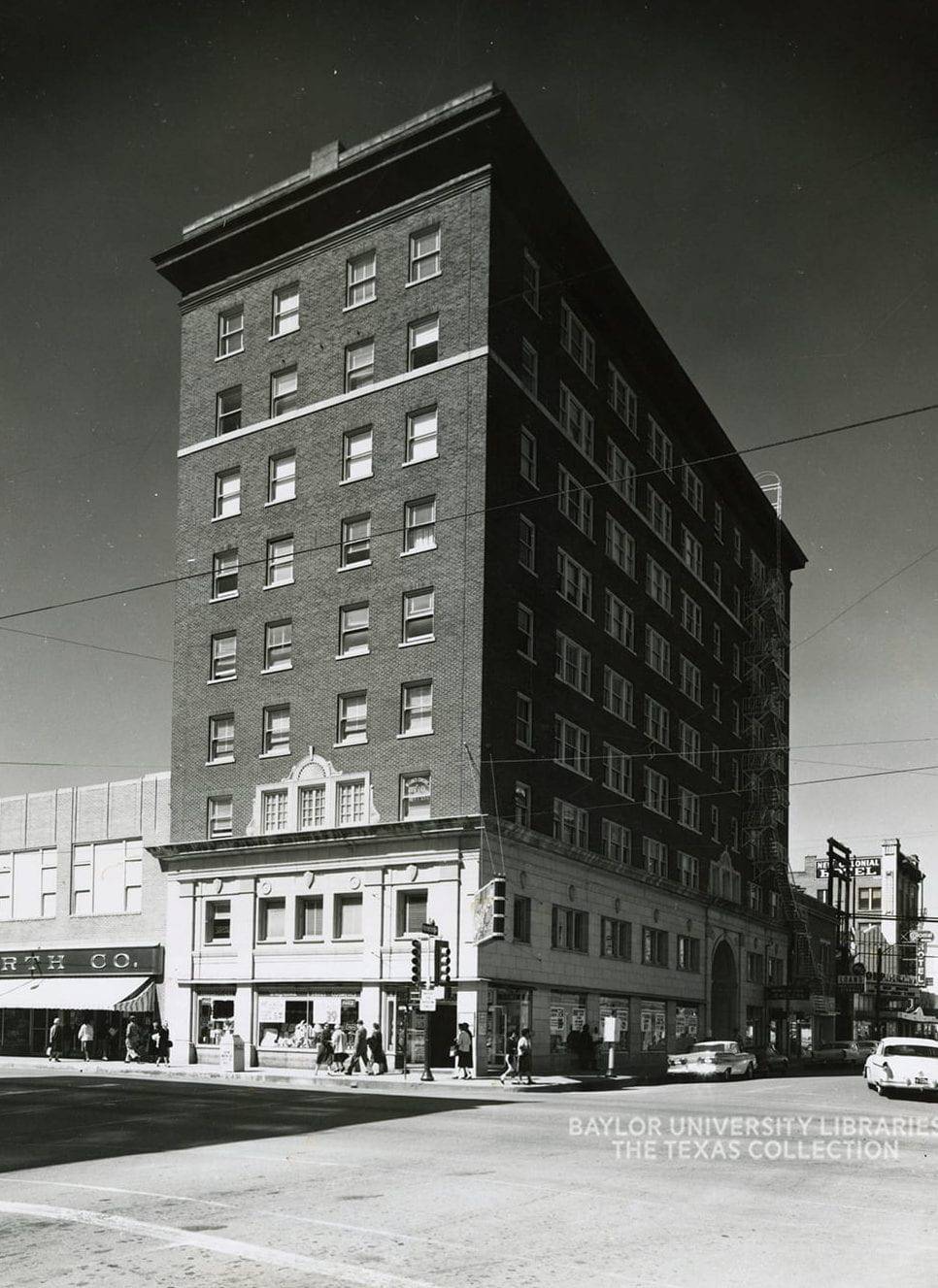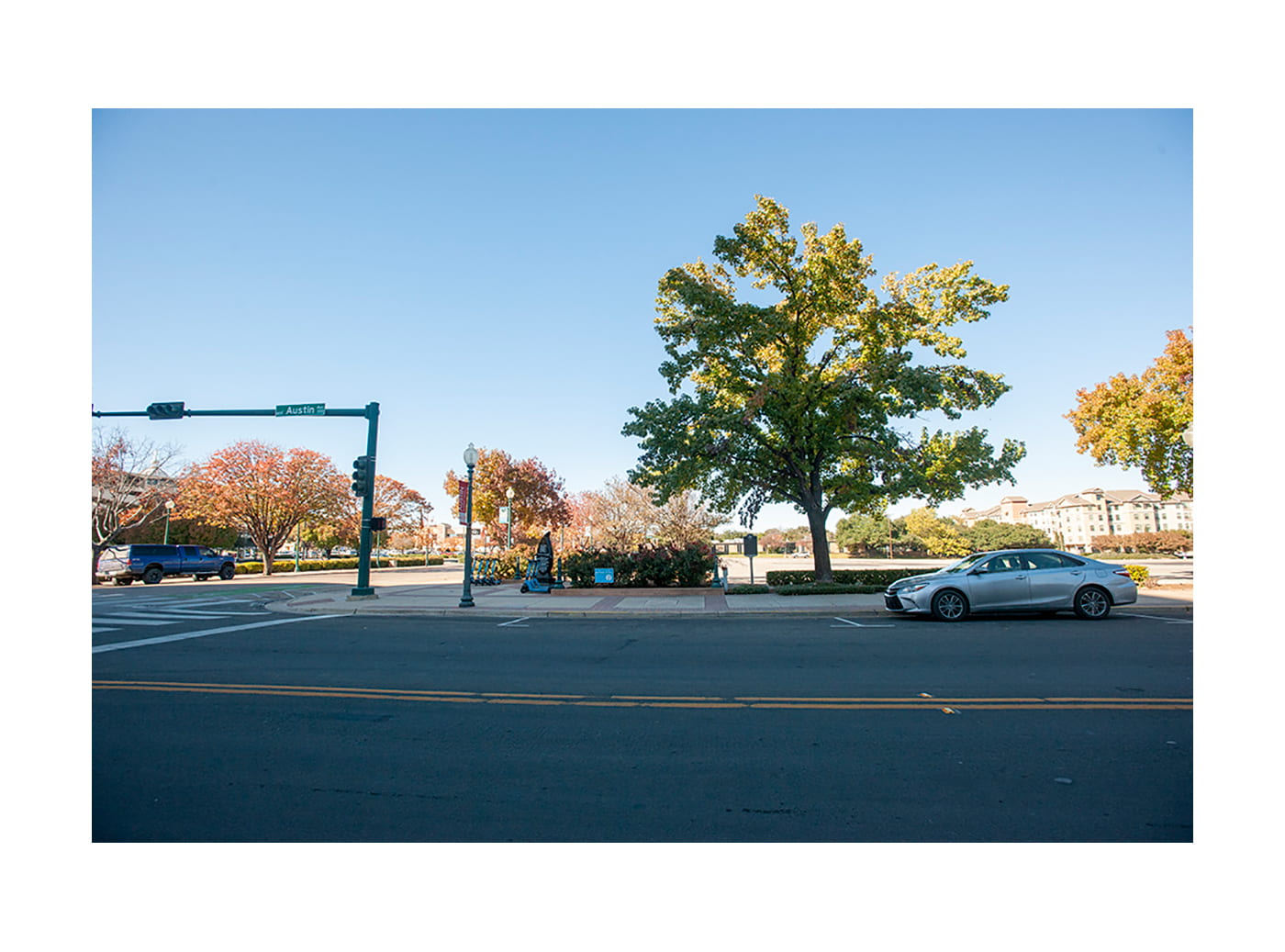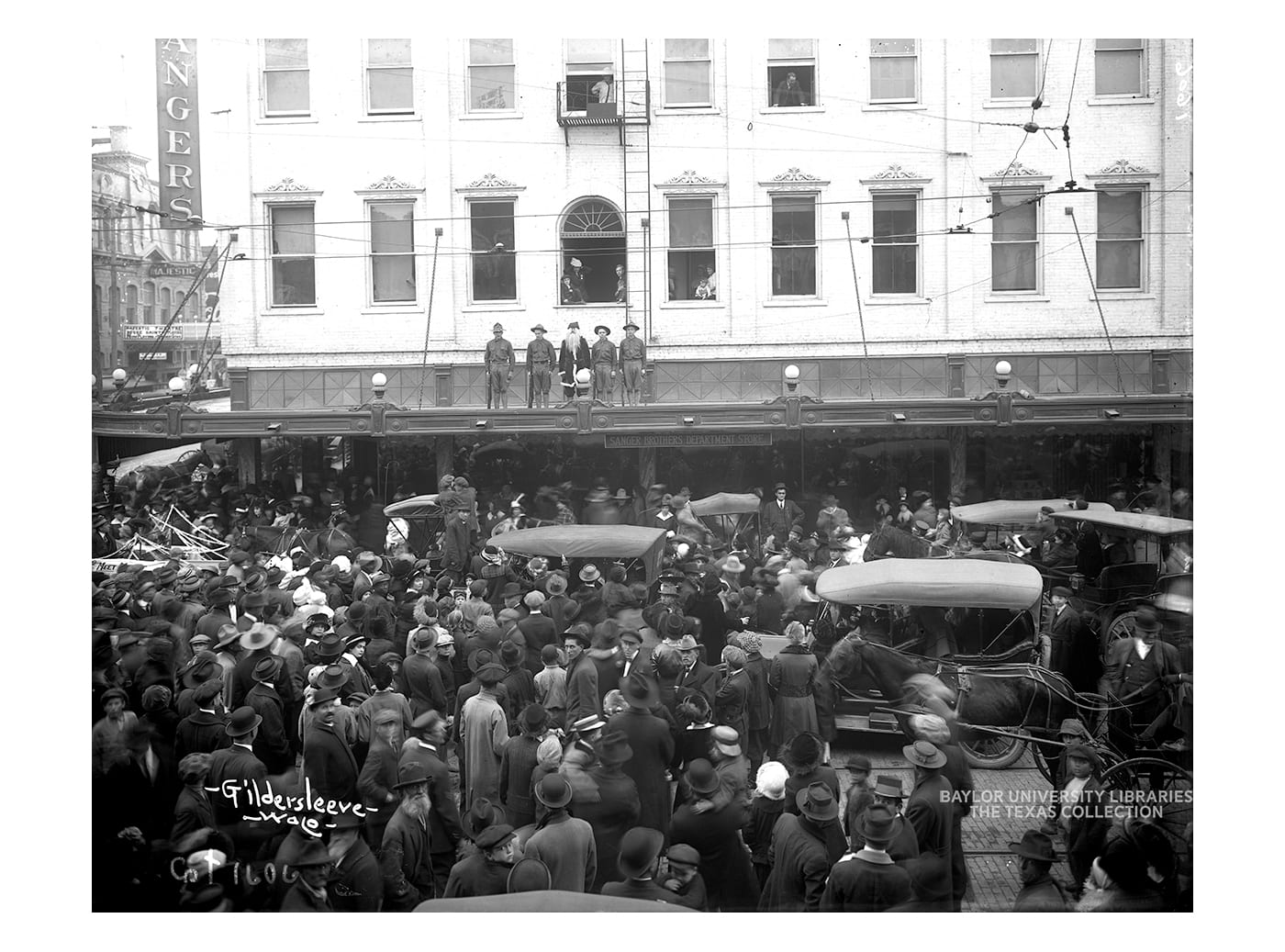This blog post was written by Student Assistant Morgan Ballard. Morgan is a Senior Anthropology (Archeology) major in her second year at The Texas Collection. Morgan wrote this post as an analysis of research methods she learned while at Baylor compared to those used in a real-life scenario. Photos included were taken by Morgan as part of her research.
The First Street Cemetery was one of the first public cemeteries in Waco, Texas which opened in 1852. The original plot is located on the corner lot of South University Parks Drive, formerly First Street, and North I-35 Frontage Road with additions reaching to the Brazos River and behind Hebrew Rest Cemetery. First Street Cemetery is recognizable by the sparse markers and many unmarked graves further back surrounding the Texas Ranger Museum. In contrast, Hebrew Rest, a perpetual care cemetery is recognizable by the clearly marked rows and ornate fence surrounding the property.

Buying plots was not a requirement for burial in this cemetery, which has continuously contributed to confusion related to finding graves. The lack of cemetery layout records led to reuse of several plots (stacked graves) as the cemetery filled quickly with various members of society including Civil War and World War I veterans as well as many members of the founding families of Waco. First Street Cemetery has never been a perpetual care establishment, which began to show in the late 1800s as the cemetery began to deteriorate. Headstones began to sink into the ground or were stolen and made identifying graves difficult at best. Considered full, the cemetery was officially closed to the public in 1897. Plots that were purchased, such as those by the Free Masons and the Odd Fellows of Waco, were used until the last interment in the 1920s, after World War I.
Record keeping for the First Street Cemetery has been poor from the beginning, a trend that has unfortunately continued for many years. In 1963, the publication of the McLennan County Cemetery Records, which can be found at the Texas Collection, was the first time intensive cataloging was conducted. However, because of the lack of initial record keeping, the cemetery records only record graves that were visible at the present time. In 1965, in preparation to build the Texas Ranger Museum on the northwest corner of First Street Cemetery, a map, also found at the Texas Collection, was plotted to identify known graves and move them within the confines of the original portion of the cemetery. At the time, legally, only headstones had to be removed from an area to build. No further documentation could be found that extensive searching for unmarked graves was conducted. As such, when looking at the old layout of the cemetery it is highly likely the areas initially checked for graves, including under the parking lot and main building, still contain burial sites.
In 2006 the Texas Ranger Museum set plans to build an additional meeting hall to the main building and hired archaeologist Michael Bradle to conduct an archaeological excavation in the area and report his findings. According to normal standards of archaeological research, reports should include detailed background research of the area, both historic and prehistoric, detailed methods of excavation and all findings, as well as an interpretation of the site including a full investigation if artifacts for cultural importance. An analysis of Bradle’s investigation shows no mention of the First Street Cemetery history or other historic references, nor does it mention artifacts he found. For example, in his report he briefly mentions a brick wall uncovered in one of the deeper excavations but does not list this as an artifact (the map created in 1965 clearly shows the bricks). In the case of known or supposed historic graves, the minimum depth of excavations should be at least six feet down as this is, and has been for some time, the most common burial depth. The report shows Bradle used scraping techniques over the entire site area, which only removes three inches of topsoil, using a shovel or trowel. He also dug trenches of three feet deep, but according to standards these should continue down to bedrock.
Bradle granted the museum permission to begin construction in 2007, however, it did not last long. As construction crews began digging trenches for utility lines, they uncovered several unmarked graves. A cause for alarm, this resulted in years of work on the part of several state archaeologists, archaeology students, legal teams, museum staff, and state officials to look over the original findings from Bradle. Over the span of three years, 200 people were disinterred.


In 2013, the First Street Cemetery Memorial Advisory Committee was formed. The committee was comprised of fifteen people including Baylor employees, Historic Waco Foundation members, funeral home directors, avocational historians from the Waco area, and various community leaders. The committee provided historical research on the cemetery, found an appropriate reburial site (Rosemound Cemetery), compiled biographical information of individuals, sought designation of the First Street Cemetery as a Texas Historical site, and submitted text for a historical marker for the reburial site. The committee was active until 2018, ceasing operation once most people were reburied, the First Street Cemetery was designated as a historic site, and the historic markers were placed.
Today the First Street Cemetery still surrounds the Texas Ranger Museum. The city remains in charge of the cemetery and museum grounds yet continues to neglect the cemetery. Efforts are currently being made by a small student organization at Baylor University to receive permission to take care of the cemetery.
References
“1st Street Cemetery.” S.l: s.n.] 1968, Print.
Bradle, Michael R., Gilbert T. Bernhardt, and Ronald W. Ralph. Archaeological Survey and Monitoring of the Texas Ranger Hall of Fame and Museum Expansion Project for the City of Waco, McLennan County, Texas. Lampasas, Tex: American Archaeology Group, 2006. Print.
Digital Sanborn Maps 1867-1970. S.l: Bell & Howell, UMI. Print.
First Street Cemetery Location Lists. S.l: s.n., 1992. Print.
First Street Cemetery Memorial Advisory Committee Records, 2013-2015 (bulk 2014). N.p., Print.
“Map of First Street Cemetery.” S.l: s.n.] Print.
Shaw, Rissa. “Waco: City Aims to Right Past Wrongs by Bringing Peace to Disturbed Graves.” Https://Www.kwtx.com, 19 May 2018, www.kwtx.com/content/news/Local-city–483106341.html.
Smith, J.b. “Dead Await Reburial at Ranger Museum.” WacoTrib.com, 15 July 2020, wacotrib.com/news/government/dead-await- reburial-at-ranger-museum/article_3576a4a0-5bfa-5e69-91db-bd656b1df48a.html.
Usry, John M. McLennan County, Texas, Cemetery Records. Waco: N.p., 1965. Print.




























